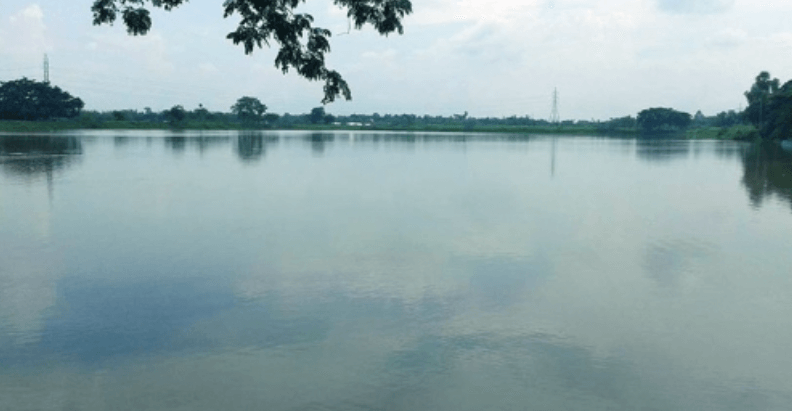
Shamsher Ghazi of Bangabir, Ghazi of Samash was an anti-British revolutionary and a hero of the peasant revolt in the Roshanabad Parganas of Tripura. He was the first to be killed by the colonial power after Shamser Ghazi Nawab Sirajuddaula. Greater Noakhali, Feni, Comilla, Chittagong, and Tripura. In the middle of the eighteenth century, a revolutionary emerged in South-East Bengal. His name is Shamser Ghazi. His title is ‘Hero of Bengal’, ‘Tiger of Bhati’. He formed a battalion against the Mugh-Portuguese pirates. The Harmads were expelled from the coastal towns. Syed Gada Hossain, the successor of the poet Syed Sultan, lit the lamp of knowledge in his heart. Unsuccessful love with Zamindarkanya Daryabibi improved his life to a different extent. Zamindari took possession through the peasant movement.
Shamsher Ghazi of Bangabir was born in Chagalnaiya Upazila of the present Feni district. His father’s name was Pir Muhammad Matantar Peer Muhammad Khan and his mother’s name was Kaiyara Bibi. [3] He was a slave to a landlord in his early life.
From Chagalnaiya in Feni, 6 km along the Grand Trunk Road towards Chittagong, Kaiyara Bazar falls in front. The name of the village here is Kaiyara. This Kaiyara village is named after Kaiyara Bibi. And Kaiyara Bibi is the mother of Shamser Gazi. Shamser Ghazi is called Bhati Bagh. His father’s name is Pir Mohammad. Pir Mohammad was a rent collector. For some reason, he quit his job and moved to the Bedarabad area with his wife. When he lost his way due to financial difficulties, Nasir Man Chowdhury, a philanthropist of Nijkunjara Mouza, gave him shelter. Shamser Ghazi was born in that house.
Shamser Gazi’s childhood was varied. He lost his father at a very young age. Despite the lack of family, the boy Shamsher was very naughty. One day he was sitting on the bank of the Feni river crying after being scolded by his mother. Then Jagannath Sen, the talukdar of Shubhpur, saw Shamsher. He kindly took Shamsher to Shubhpur. The talukdar of Shubhpur had no children. Shamsher Ghazi grew up there in affection. In addition to his studies, he became proficient in wrestling, stick fighting, and archery. He also took hands-on training on various subjects.
After the death of Talukdar Jagannath Sen, young Shamsher Gazi started collecting rent in Shubhpur. His rise began. At that time he formed a strong force to stop thieves, robbers, and pirates. Ghazi was commanded by his cousin Chadu Paloyan. When Shamser Ghazi, the general of the Maharaja of Tripura, entered the area around 1839, they fell and were taken prisoner by the resistance of General Chadu Paloyan. The Maharaja of Tripura recognized Ghazi as the legitimate zamindar of Kedakshinshik on the condition of the release of his general. Shamser Gazi was Prajadardi. He waived one year’s rent of the farmer in case of severe crop damage due to the hill slope and informed that it was not possible to pay rent to the Maharaja’s treasury for the next three years. The Tripura Maharaja became enraged and sent about 6,000 troops to oust Ghazi. The result is the opposite. After a miserable defeat, he left the palace and hid in the forest.
A large part of the state of Tripura came under the control of Shamsher Ghazi. During the reign of Shams Gazi, Udaipur was the capital of Tripura. But most of the time he lived in his main fort and palace at Champaknagar in Jagannath-Sonapur, surrounded by the Feni river at the foot of the Raghunandan hills.
Zamindari took possession through the peasant movement. Opposing anti-people activities, Roshanal fell victim to the Tripura Raj. The fierce battle began. The tiger roared. Bhukhananga jumped on the battlefield with the peasants. Tejodipta Javan Bir Shamser roamed the battlefield in Hirakdana. While destroying the enemy army, he became an indestructible warrior, an irresistible weapon. Took over the throne. The state of Tripura ruled for a continuous period. The English bania cornered him.
The border area of India at Champaknagar in Chagalnaiya is intertwined with the memory of Shamsher Ghazi. There are Shamser Gazi Tunnel, Shamser Gazi Dighi, and many more. However, the ruins of many other important structures, including his palace, remain divided in Tripura, India.
Read More: Bijoy Singho Dighi
